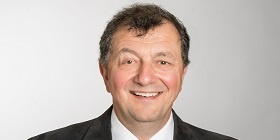Radio Magazine: Frank Foti on Audio Processing for Broadcast Streaming | Telos Alliance
By The Telos Alliance Team on Feb 15, 2017 1:00:00 PM
Radio Magazine: Frank Foti on Audio Processing for Broadcast Streaming
When it comes to broadcast streaming, there is a big difference between audio processing for streaming and audio processing for over-the-air. In the February 2017 issue of Radio magazine, Doug Irwin interviewed Frank Foti, along with other audio-processing experts, on how to process audio for broadcast streaming properly, asking them about the design differences between over-the-air processors and those designed for streaming media.
Here's some of the advice Frank had for Radio readers:
It is possible for lower bitrate channels to offer high quality and clear intelligibility through the use of a dedicated processor that employs the means to understand and handle the challenges of the coded audio path. For those who wish to tweak on their own, with existing processing equipment, the following should be observed: Avoid dense processing that contains fast limiting time constants. Try to reduce the attack time on functions when 5 dB, or more, depth-of-compression is desired. This will reduce upper frequency processor induced IMD.
Make sure that the coding system provides full headroom. If the system clips on its own before 0dBFS, then reset the maximum input level to avoid system headroom problems.
Low bitrates benefit from bandwidth control. A static low pass filter will reduce artifacts. The tradeoff is perceived high frequencies vs. quality. A specialized processor for coded audio will offer some dynamic method to accomplish this.
Do not use any final limiter that contains a clipper. The THD generated by the clipping function will cause more trouble than it’s worth. Precision peak control is needed in the coded system. A specialized processing system for this medium will provide a look-ahead limiter to accomplish this task.
Be mindful of system headroom. Set the processing system to operate with an output level set no greater than -3 dBfs. Allowing 3 dB of headroom will remove any possible distortion occurrences due to less than adequate digital-to-analog converters downstream.
If the above items are followed, improved coded audio will result.
See what else Frank had to say, along with more great info from other broadcasters in the full feature, How to Process Audio for Streaming, Properly, from Radio magazine.
Further Reading
Are You (Adaptive) Streaming Like You Mean It?
All About Adaptive Audio Streaming
The Stream Locomotive is Leaving the Station. Don't Get Left Behind.
Telos Alliance has led the audio industry’s innovation in Broadcast Audio, Digital Mixing & Mastering, Audio Processors & Compression, Broadcast Mixing Consoles, Audio Interfaces, AoIP & VoIP for over three decades. The Telos Alliance family of products include Telos® Systems, Omnia® Audio, Axia® Audio, Linear Acoustic®, 25-Seven® Systems, Minnetonka™ Audio and Jünger Audio. Covering all ranges of Audio Applications for Radio & Television from Telos Infinity IP Intercom Systems, Jünger Audio AIXpressor Audio Processor, Omnia 11 Radio Processors, Axia Networked Quasar Broadcast Mixing Consoles and Linear Acoustic AMS Audio Quality Loudness Monitoring and 25-Seven TVC-15 Watermark Analyzer & Monitor. Telos Alliance offers audio solutions for any and every Radio, Television, Live Events, Podcast & Live Streaming Studio With Telos Alliance “Broadcast Without Limits.”
More Topics: Omnia Audio, Telos Systems, broadcast streaming, Z/IPStream X/2, Z/IPStream 9X/2
Recent Posts
Subscribe
If you love broadcast audio, you'll love Telos Alliance's newsletter. Get it delivered to your inbox by subscribing below!
